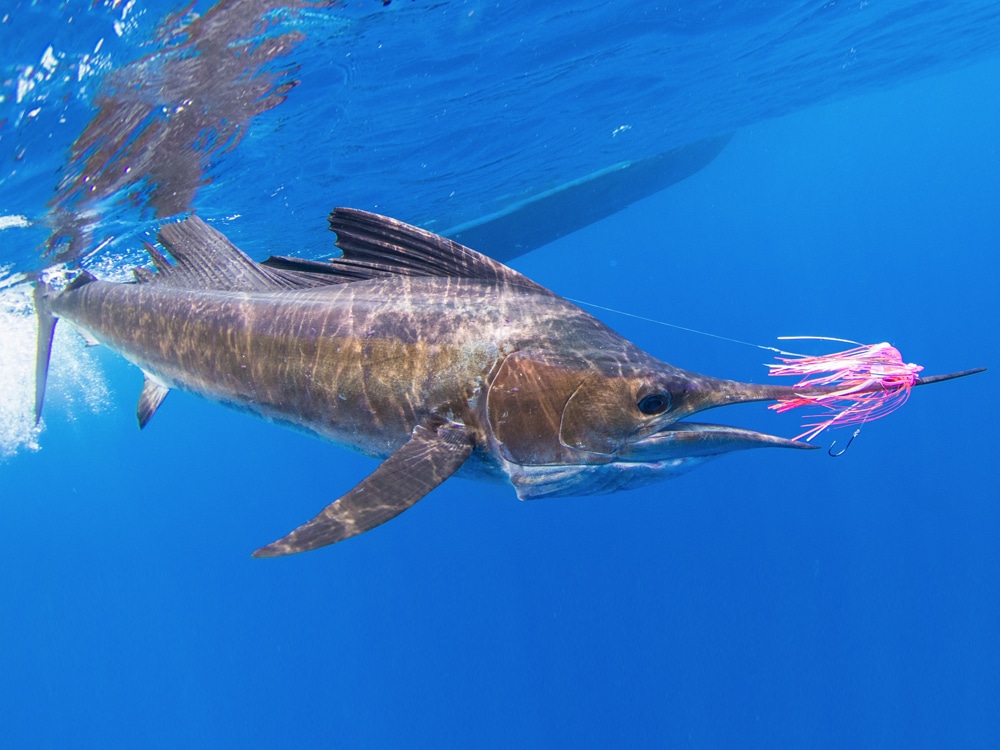
Few game fish are as majestic and offer the kind of challenge sailfish pose to fly anglers. Although fast, powerful and very acrobatic, with some teamwork and the right technique, this popular big game species can be fooled and tamed with fly-fishing gear.
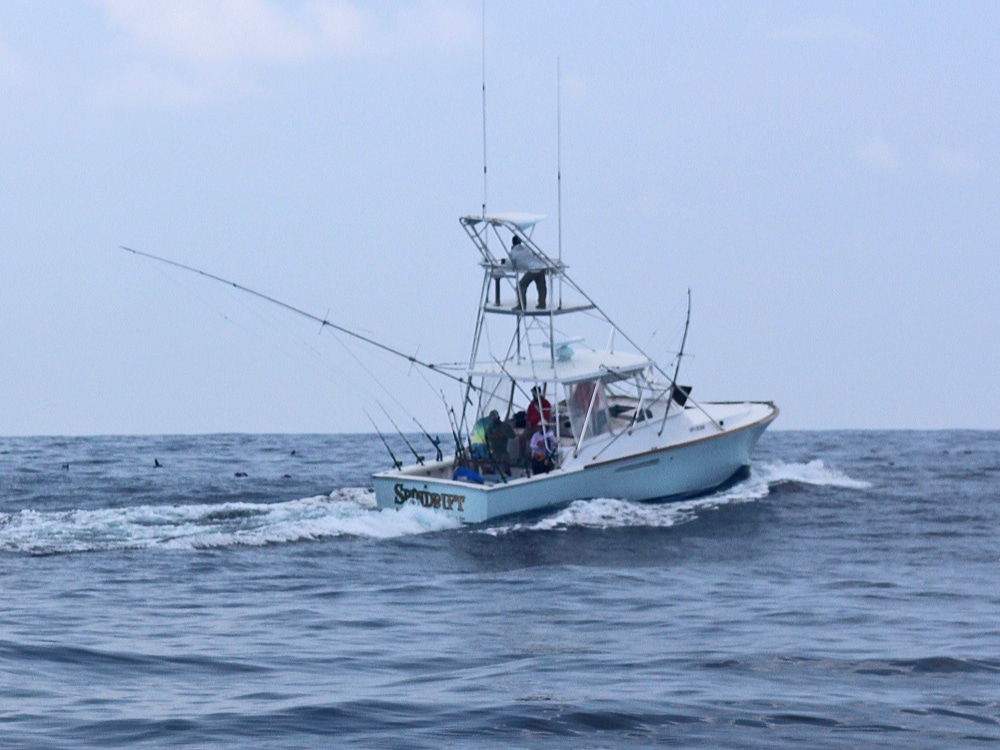
Conducive Destinations
There’s no substitute for hands-on instruction. And as when targeting other top-tear species that demand darn near perfection from the angler and his tackle, when fishing for sails it often takes a couple of tries to fine tune your gear and hone your technique. Therefore, the first step toward ensuring good results during your quest is choosing a destination with a thriving sailfish population likely to afford you multiple daily shots. That, of course, also boosts your chances to boat one or more fish, even if you lose a couple, which often happens despite doing everything right.
Traveling to Florida or North Carolina — where Atlantic sailfish are abundant and top big-game boats with experienced crews are readily available — is easier and often more affordable than a voyage to a foreign destination. However, Atlantic sails, despite the similarities with their Pacific counterparts, exhibit various key behavioral differences that make them more difficult to consistently trick into taking a fly.
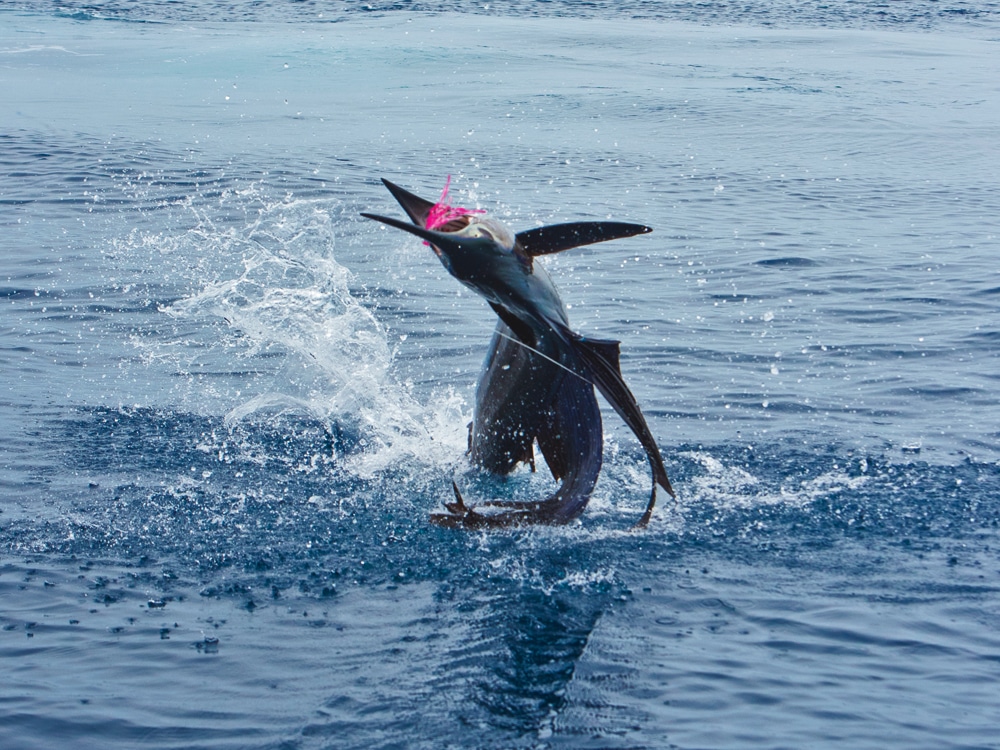
Atlantic vs Pacific
Atlantic sailfish tend to be more suspicious than Pacific sails, which are not only more aggressive, but usually also more persistent in their pursuit of prey. Atlantics are, in addition, smaller and more difficult to spot when they first come up behind the boat. They also make up their mind about a potential meal quicker than Pacifics, greatly limiting opportunities to tease a fish close enough to the boat’s transom to effectively present a fly.
Catching Atlantic sailfish on fly is doable, in fact, many have been caught over the years, most catches have been recorded by experienced fly-rodders in places like Isla Mujeres, Mexico, where countless fish embark on amazing spring flurries, often competing recklessly for forage with other members of their wolf pack. By contrast, Pacific sails are far more fly-fishing friendly, and anglers — including many with limited exposure to billfish — traveling to popular Pacific big-game meccas like Guatemala, Costa Rica and Pan-ama tally thousands of releases every year.
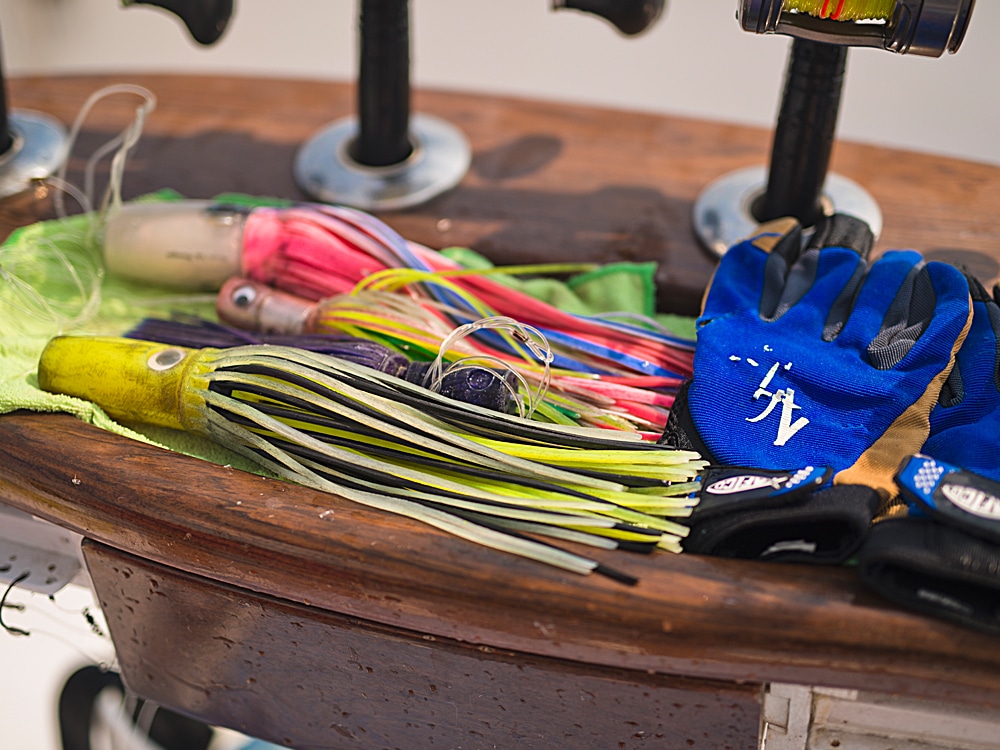
Bait and Switch
Targeting sailfish on fly is a team effort that requires a skilled captain to run the boat, and a mate proficient at manipulating fish into focusing on one particular teaser and then drawing it within fly-casting range. The angler is tasked with delivering the fly to the sail, but the delivery must be synchronized with the mate’s removal of the teaser from the water to successfully execute the bait-and-switch technique responsible for the overwhelming majority of sailfish caught on fly.
Unlike conventional billfishing methods, where multiple teasers are frequently part of a trolling spread that also includes natural baits or lures with hooks in them, for fly fishing, a single daisy chain of plastic squid with a smoker in back — or a similar teaser setup — is usually trolled to raise fish, augmented by a pair of lures rigged with hookless baits and pulled on flat lines from both transom corners. When a sailfish shows up to assess what seems like a feeding opportunity, it is the mate’s responsibility to get the fish to commit to one of the lures with a hookless bait and coax it within casting range, while the captain or a second mate or angler clears the rest of the teasers.
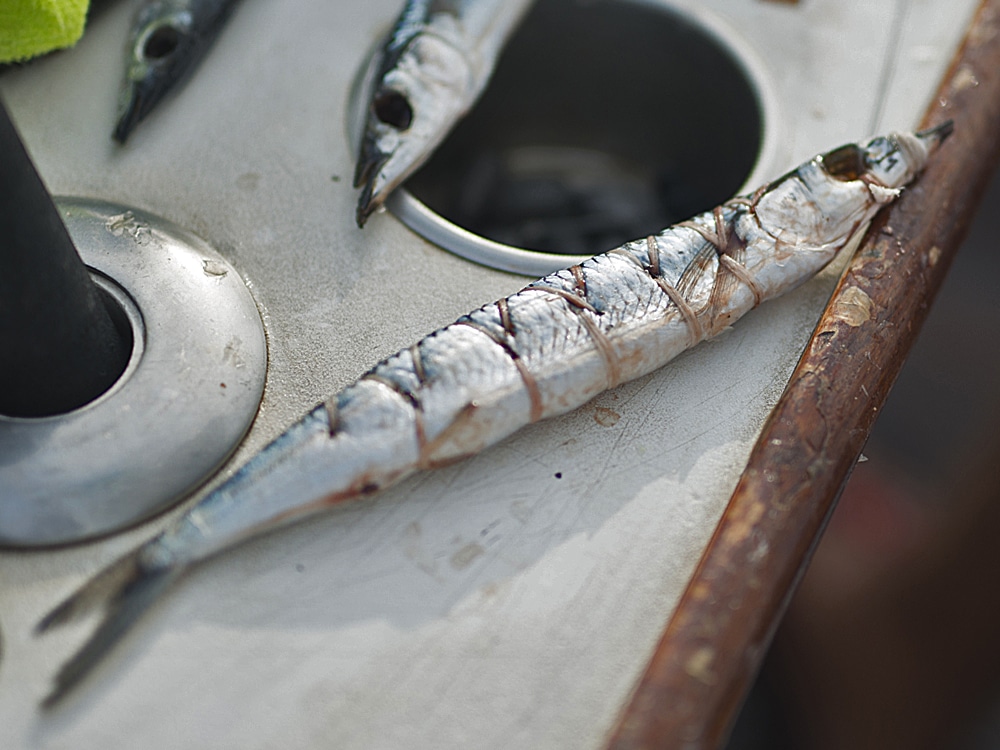
Once that’s accomplished, the only offering left in the water (a lure rigged with a hookless bait: either a ballyhoo, small bonito, or a tuna or dolphin belly) is brought increasingly closer to the boat’s transom, keeping it barely ahead of the sailfish in a proverbial cat-and-mouse game during which the fish is allowed to briefly taste the bait a couple of times in order to get the quarry excited.
This is where a seasoned mate with fly-fishing experienced is worth his weight in gold, because he must crank the teaser fast enough to prevent the fish from fully taking the bait and, based on the sail’s reactions, know when to let it get a taste so that instead of getting discourage, it becomes increasingly aggressive.
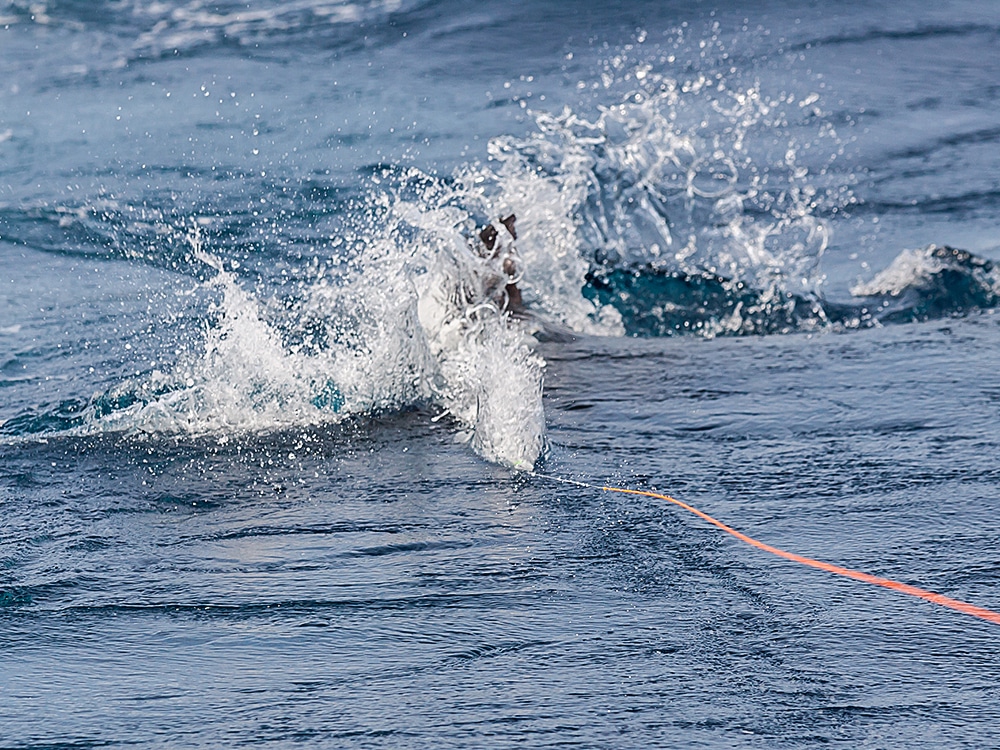
The Cast
Once the sailfish is less than 30 feet off the transom, the mate yanks the teaser out of the water, the captain puts the boat’s engine in neutral, and the angler makes the cast, placing the fly near the fish, preferably a couple of feet ahead and slightly to one side, which forces the sail to turn in order to grab the fly, thereby increasing the odds of a solid hookup.
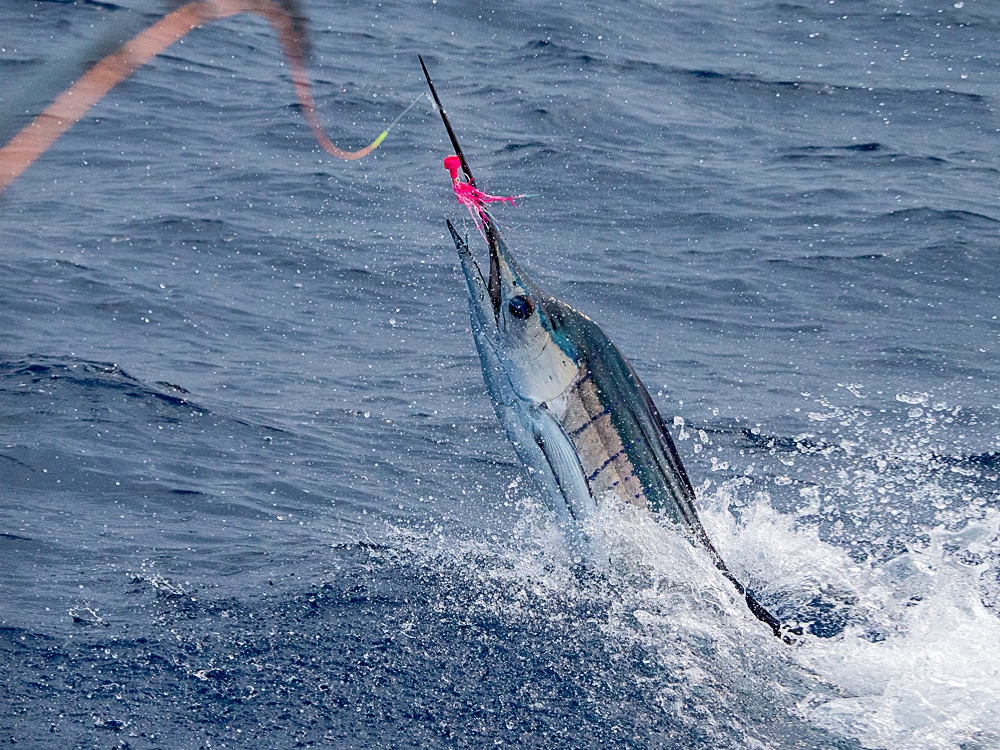
The short cast is more of a flop, and should be performed with a single false cast. Keeping the leader short and the fly wet makes that easier to achieve. To minimize the likelihood of the fly line tangling on an outrigger boom or halyard during the cast, only the left rigger is deployed to run the teasers. If the angler is a right-handed caster, the left rigger gets the nod, and viceversa.
While some fly-rodders just pull fly line off the reel and drop it on the cockpit deck to get ready for action, others keep the coils in check in a 5-gallon bucket with just enough water to maintain the line wet for easier shooting. Adding too much enables the water to slosh around in the bucket, which leads to tangles.
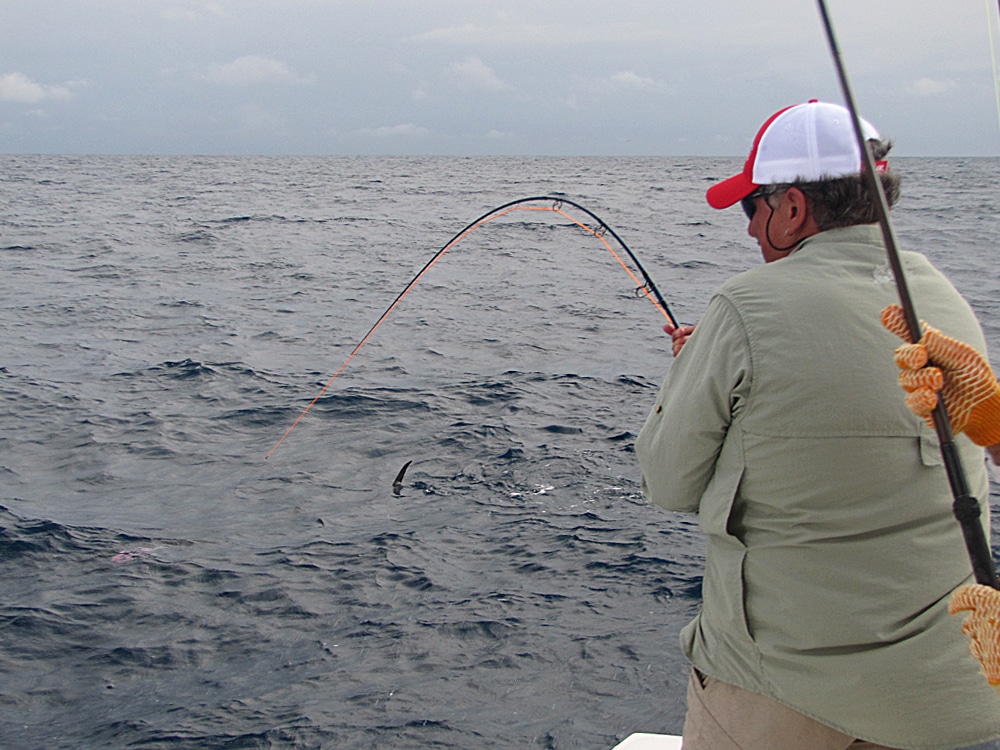
Hook-set and Fight
Watching a big sailfish devour your fly near the transom, practically close enough to touch with the rod tip, it’s easy to get overly excited and pull the trigger too soon. It’s important to remain calm and remember to wait until you feel the weight of the fish before attempting to drive the hook home.
Strip-striking is a must, and it must be done forcefully and keeping the rod tip no higher than paralleled to the water. That way the fly remains in the drink, giving the fish another shot at it if you happen to miss on the initial hook-set attempt.
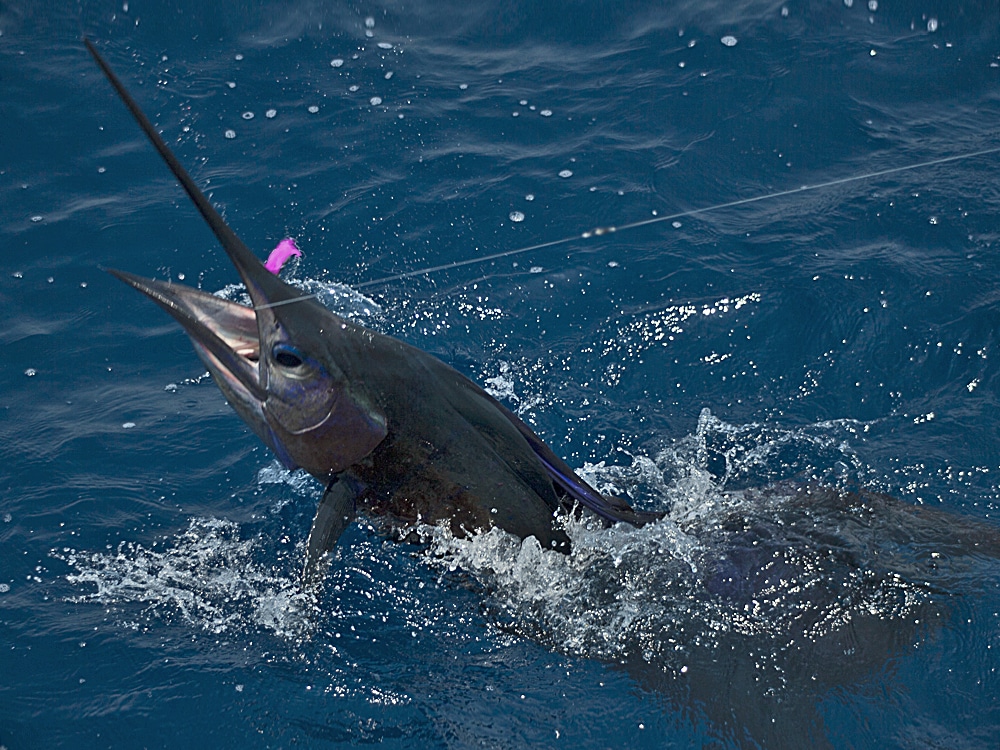
A hooked sailfish’s first response is to either take off or shake its head violently to rid itself of the hook. If it does the latter, just stay tight on the fish until it runs. Once it takes off, concentrate on clearing the fly line. Form a tight circle around it with the thumb and index finger in your free hand to create some tension, and stretch your arm down and away from the reel to give yourself a cushion in case you’re forced to undo a tangle before it reaches the first rod guide.
If a knot or tangle forms and you can’t shake it loose, point the rod at the fish and twist it so the reel points up. Then the line will slide along the rod blank and be less likely to catch on every snake guide. If luck is on your side and the knot or tangle makes if through all the guides, ease up on the drag and try to clear the mess before resuming the fight.
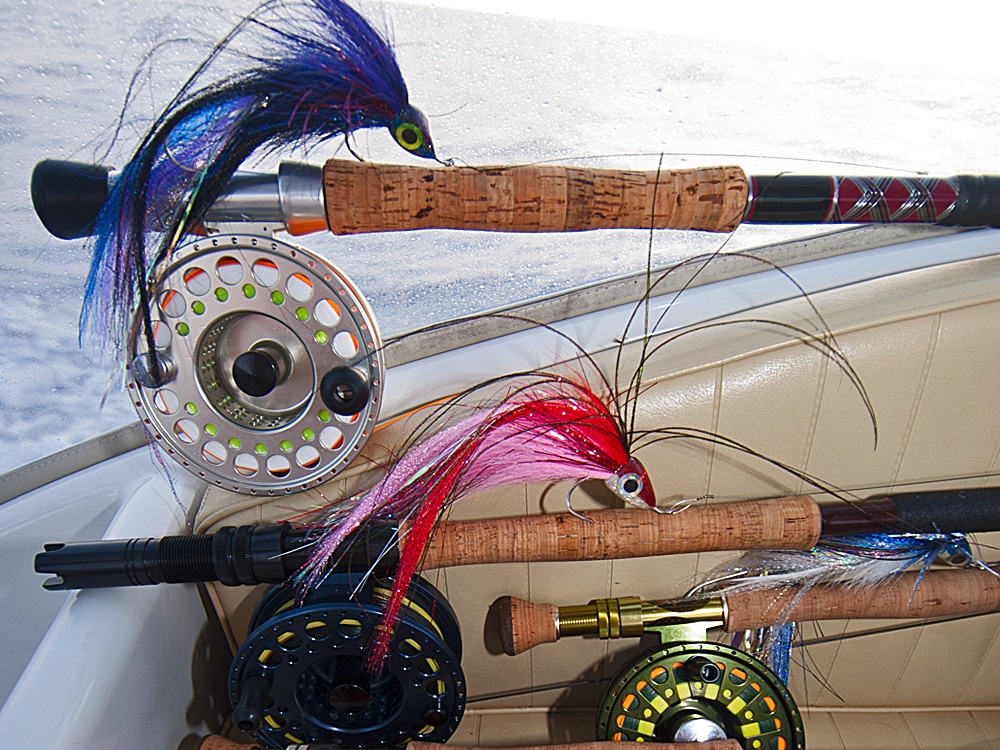
Fly Tackle and Lines
Although a few fly anglers opt for 13- to 15-weight rods built specifically for billfish, fly rod manufacturers design their 12-weights for tarpon and other large, powerful fish, so that’s not really necessary. As a rule of thumb, in fact, most sailfish anglers use a 12-weight rod with a quality, large arbor reel that holds 350 yards or more of 50-pound backing, matched with a 13-weight fly line.
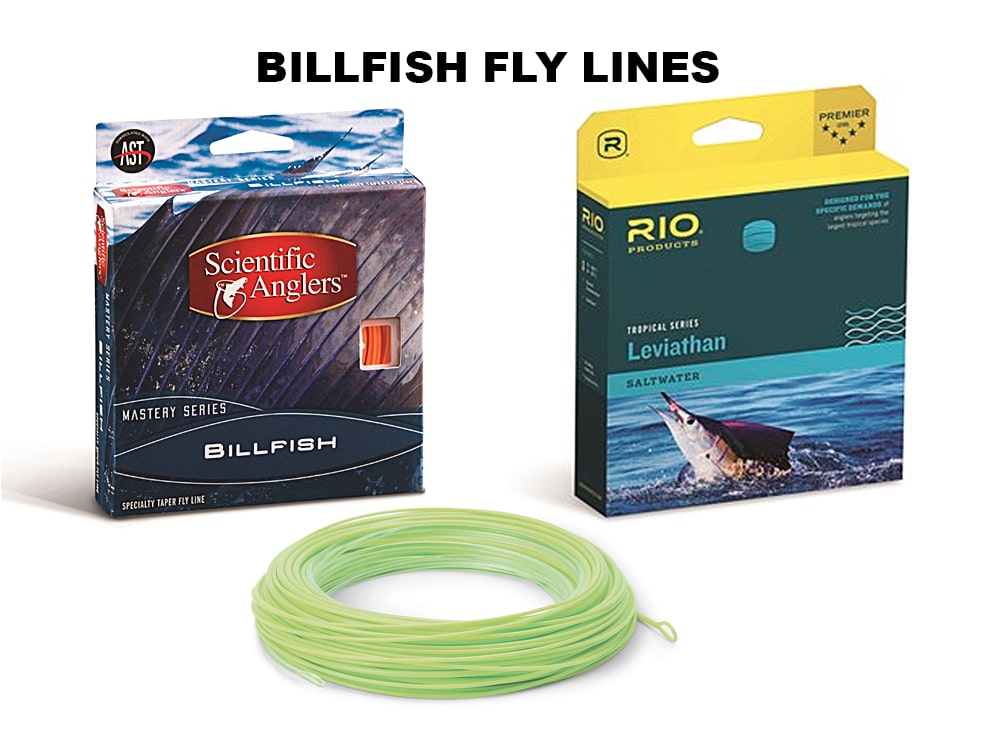
The top brands offer specialty fly lines for billfish. Scientific Anglers makes its Mastery Series Billfish Taper line, an orange, 80-foot line with a heavy sinking head and floating running line that is available in 13- and 15-weight. Cortland makes its Tropic Plus Billfish Taper Subsurface line, a chartreuse, 65-foot fly line with a 9-foot, clear intermediate-sink tip, available in 13-, 14-, and 15-weight. Meanwhile, Rio offers, as part of its Tropical Series Levianthan lines, a dark gray (with the rear 4-foot section in orange), 550-grain (fast sinking), 30-foot Billfish Shooting Head, which completely forgoes the running line to minimize line drag when a billfish sounds.
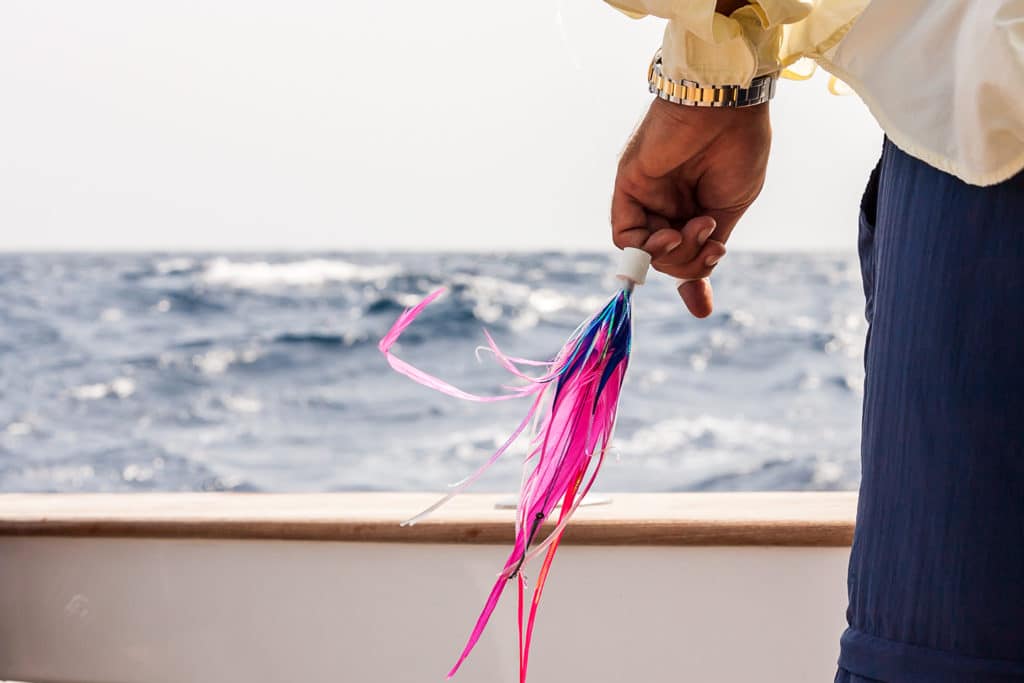
Sailfish Flies
A pair of 5/O to 7/O hooks rigged in tandem with the points facing in opposite directions is the accepted standard for billfish patterns, and tube flies, which allow the leader to slide through freely, improve your chances for a solid hook-set considerably. Cam Sigler, the leading maker of big game flies, offers them in a couple of sizes and several different colors. For some reason, bright pink and white has been anointed the top color scheme for sailfish flies. It’s not exactly clear whether that’s due to the fish’s predilection, or because the contrasting, hi-vis combination is easy for the angler and crew to keep track of in the water.
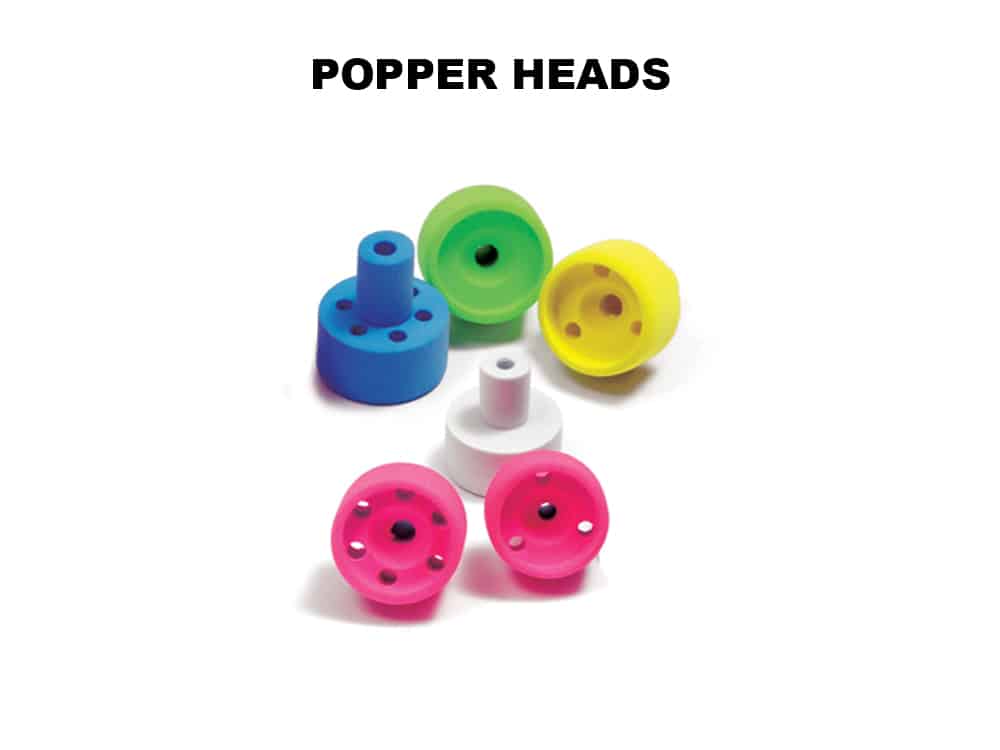
It’s been my experience that Pacific sails do like pink and white, so why not take advantage of the visibilty benefit? For Atlantic sails, I’ve personally had better luck with blue and white, however, I have caught a couple on pink and white also, so I carry flies in both color schemes whenever I target sails, no matter in which ocean. But as a norm, my flies for Atlantics average 8 inches in length, and the ones I use for Pacifics are two inches longer and a bit bushier too.
Perhaps the most important accessory is a popper head just ahead of the fly to produce the noise and splash that lets sailfish zero in. Turbo Popping Heads by Rainy’s Premium Flies are great, and Cam Siegler offers a slimmer version called Bubble Heads that are a bit less wind resistent and still create the desired ruckus.
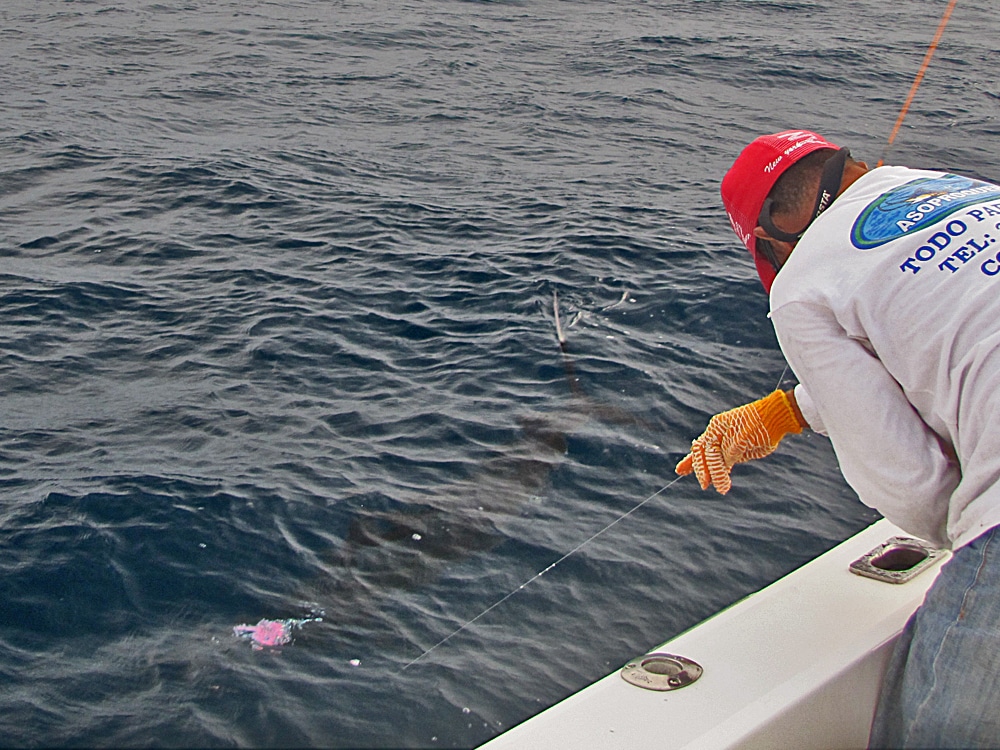
Sailfish Leader Setup
There are different opinions about the length and makeup of fly leaders for billfish, but my preferred setup is 8 feet long and pretty simple to put together. I start with 6 feet of 60-pound mono, which once I attach one end to the fly line with an Albright knot, and tie a Surgeon’s Loop on the other, forms a strong 5-foot butt section that turns over the leader and fly pretty well. Next, I grab a 5-foot length of 20-pound hard mono and tie Bimini twists on both ends, leaving 18 to 20 inches of single strand to serve as the class tippet. Then, I tie a Surgeon’s Loop with the double line of one of the Biminis, so I actually end up with a double-strand loop for a stronger connection to the butt.
Finally, because I use tube flies for sailfish, I make up enough tandem-hook rigs for my flies with 80-pound fluorocarbon, leaving two feet to slide through each fly and serve as bite tipet (to protect against chafing from the raspy jaws of a sailfish), which I attach to the other Bimini on the 20-pound class tippet with a Slim Beauty knot.
Since the butt section is pretty heavy duty and rarely damaged during fishing, I only worry about having spares of the rest of leader. And because I normally carry a dozen rigged tube flies, I already have an equal number of leaders ready to go. Of course, I still carry spools of the three leader materials I use, and replace whatever leaders and tandem-hook rigs I had to discard before the next day of fishing.









